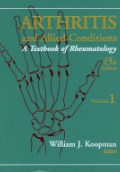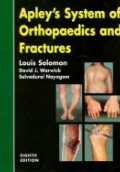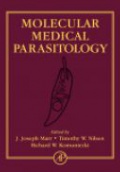
Molecular Cell Biology
ISBN: 0716743663
Vydavateľstvo: Freeman
Rok vydania: 2004
Nárok na dopravu zdarma
This is an authoritative and comprehensive vision of molecular cell biology. Advances in our knowledge of how cells work has driven the discipline to the point where we understand the cell at new levels of complexity such as larger signalling complexes in cells, and cells interacting with other cells. To present this new view of molecular cell biology and the accompanying advances in experimental technology, the fifth edition shows exciting developments in cell birth, lineage and death expanded coverage of signalling systems within the whole cell/organism and expanded coverage of metabolism and movement of lipids. In addition, new pedagogy includes research questions by looking at real experimental data in "analysing the data" problems and "updated perspectives for the future" at the end of each chapter, which explore potential applications of future discoveries and unanswered questions that lie ahead for researchers. The media package includes a companion website with animations, videos and classic experiments covering groundbreaking molecular cell biology experiments to enhance student learning. For instructors there are PowerPoint images from the text solutions and a test bank. Other supplements include an instructor's CD-ROM containing all text images, a conversion guide from the 4th edition test, bank animations and videos, and overhead transparencies. And for students there is the "Working with Molecular Cell Biology, Fifth Edition: A Study Companion and Solutions Manual".
From the Publisher
Review in the Times Higher 14th April 2000
The life processes brought to life on CD-Rom
"Biologists, from developmental geneticists to ecologists, are faced with the challenge of explaining complex phenomena at mechanistic levels. An essential first step is a solid grounding in biochemistry and molecular genetics. Principles of Biochemistry has always been a favourite of mine, and this third edition is stunning. It is as strong as ever in fundamental aspects of the subject, but it also includes many recent developments. Among the most significant are new chapters on protein structure and function, a revision of oxidative phosphorylation, and descriptions of the major experimental methods and technologies, including NMR, MS and Selex, Also in this edition is a new chapter on signal transduction, which covers one of the most exciting fields in biochemistry.
But what really clinches this text for me is the vitality that bursts from the accompanying CD-Rom. Biochemistry is the study of dynamic cellular processes. To observe the mechanism of translation, DNA sequencing or the infection of a host cell by a single-stranded RNA genome of a retrovirus, while listening to an informative commentary, brings the subject vividly and clearly to life. In addition to superb video clips, the CD-Rom contains a wealth of animations, electron micrographs and chemical structures. Impressive in the latter is the use of a wide variety of molecular representations; there is even a section showing biologically significant molecules in rotatable format.
Of all the sub-disciplines of biology that have benefited from advances in biochemistry, none has done more so than cell biology. Over recent years many of the mysteries of cellular processes, including the trafficking of organelles and spatio-temporal dynamics of specific enzymes, have been unveiled as a result of advances in the technology of fluorescent and luminescent biomolecules. Arguably the most significant of these "reporters" is the green fluorescent protein. The ability to couple transcription or translation of specific proteins to this wondrous reporter means that, with the aid of a confocal microscope, cellular processes can be observed in living cells, in real time. It is truly remarkable.
Molecular Cell Biology, now in its fourth edition, captures much of the excitement of this field as well as providing readers with a broad and sound understanding of the basic principles. Like Principles of Biochemistry, Molecular Cell Biology is accompanied by a variety of teaching aids, and by a similarly superb CD-Rom with animations of complex mechanisms, videos of cell processes and interactive tutorials. The book is up to date and incorporates advances in whole genome sequencing and the challenges these massive data sets present for bio-informatics, plus the latest in functional genomics and micro-arrays. Also worthy of note is the attention drawn to medical and biotechnological implications of many of the cellular processes described in the book.
For me, both these texts set a new level for undergraduate textbooks that I hope all future introductory texts will aspire to. Texts as good as these should change the way biology is taught. Rather than making the lecturer redundant, they provide opportunities for new and innovative approaches to teaching.














